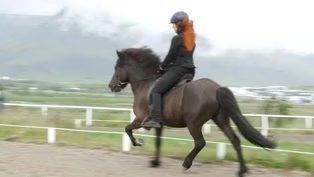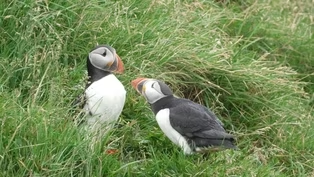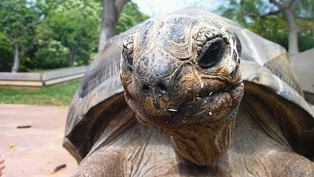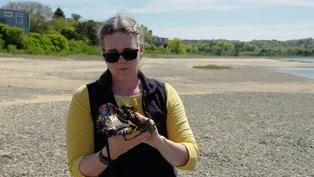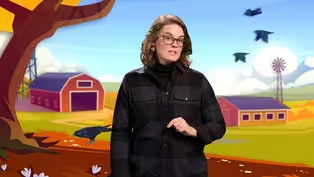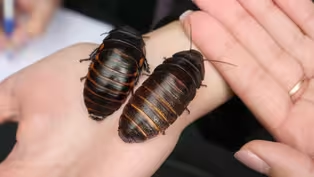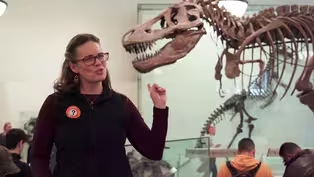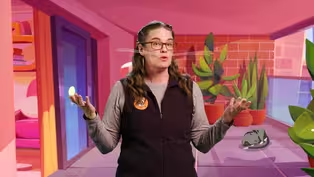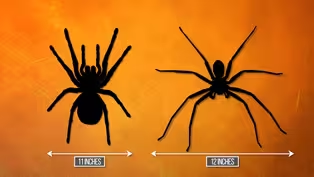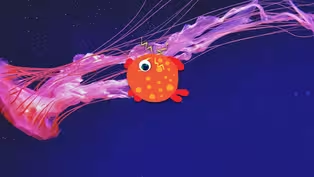But Why – A show for curious kids
Why are horseshoe crabs called crabs?
6/6/2025 | 1m 54sVideo has Closed Captions
Why are horseshoe crabs called crabs? Asks Eva from Canada.
Horseshoe crabs are one of the oldest organisms on the planet, but there's more to them than meets the eye! These gentle sea-faring creatures have been around for more than 400 million years and make up a critical part of our ecosystem. Check out this Bite to learn more about them!
Problems playing video? | Closed Captioning Feedback
Problems playing video? | Closed Captioning Feedback
But Why – A show for curious kids is a local public television program presented by Vermont Public
But Why – A show for curious kids
Why are horseshoe crabs called crabs?
6/6/2025 | 1m 54sVideo has Closed Captions
Horseshoe crabs are one of the oldest organisms on the planet, but there's more to them than meets the eye! These gentle sea-faring creatures have been around for more than 400 million years and make up a critical part of our ecosystem. Check out this Bite to learn more about them!
Problems playing video? | Closed Captioning Feedback
How to Watch But Why – A show for curious kids
But Why – A show for curious kids is available to stream on pbs.org and the free PBS App, available on iPhone, Apple TV, Android TV, Android smartphones, Amazon Fire TV, Amazon Fire Tablet, Roku, Samsung Smart TV, and Vizio.
Providing Support for PBS.org
Learn Moreabout PBS online sponsorshipMore from This Collection
Answering your favorite questions about animals and insects.
Video has Closed Captions
How do horses gallop? Asks Parker from Wisconsin. (3m 19s)
Are there animals or plants that can live forever?
Video has Closed Captions
Are there animals or plants that can live forever? Asks Eleanor from New York. (2m 25s)
What's cool about cockroaches?
Video has Closed Captions
Why are cockroaches so yucky? Asks Rosie from China. (2m 2s)
Why do T-Rexes have small arms?
Video has Closed Captions
Why do T-Rexes have small arms? Asks Grigor from Switzerland. (2m 1s)
Video has Closed Captions
Why do cats have whiskers? Asks Bryce of Georgia. (1m 59s)
What is the biggest spider in the world?
Video has Closed Captions
What is the biggest spider in the world? Asks Mia from Massachusetts. (1m 28s)
Video has Closed Captions
Do all jellyfish sting? Asks Clinton from California. (1m 51s)
Why do dolphins jump in the air?
Video has Closed Captions
Why do dolphins jump in the air? Asks Nancy from England. (1m 48s)
Providing Support for PBS.org
Learn Moreabout PBS online sponsorshipLook at this thing.
Isn't it amazing looking?
This is an Atlantic horseshoe crab, and they look almost prehistoric.
Which makes sense because they've been around for hundreds of millions of years.
But although they're called crabs, they're not actually crabs.
So what are they?
Why are horseshoe crabs called horseshoe crabs if they dont look like crabs?
That's right.
Despite their name, horseshoe crabs aren't really crabs.
Theyre more closely related to scorpions and spiders.
Let's take a look at one up close.
It has a hard outer armor.
The exoskeleton.
They molt this shell more than a dozen times over the course of their lives as they grow bigger.
The big part that looks kind of like a horseshoe holds the brain, The heart, and all the other important parts, including the largest set of eyes.
This small triangle in the middle is the abdomen, where their gills are.
And this long tail looks kind of scary, but don't worry, it can't sting you.
It actually helps the horseshoe crab flip back over if it lands on its back.
Every spring, horseshoe crabs mate and then come up at high tide to lay eggs about 5 to 10 inches deep in the sand.
females can lay about 80 to 100,000 eggs per year.
the eggs laid by these females won't all survive, theyre are really important food source for a lot of coastal birds, but the ones that do will make their way back into the sea, live for maybe 10 or 12 years, and then come back when they're adults to spawn on these very same beaches.
And these adults may live up to 20 or even 30 years.

- Science and Nature

Explore scientific discoveries on television's most acclaimed science documentary series.

- Science and Nature

Capturing the splendor of the natural world, from the African plains to the Antarctic ice.












Support for PBS provided by:
But Why – A show for curious kids is a local public television program presented by Vermont Public
